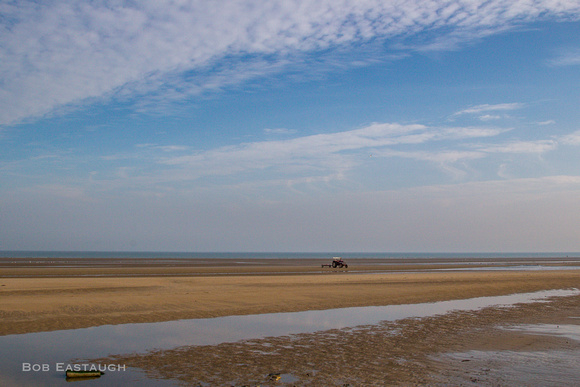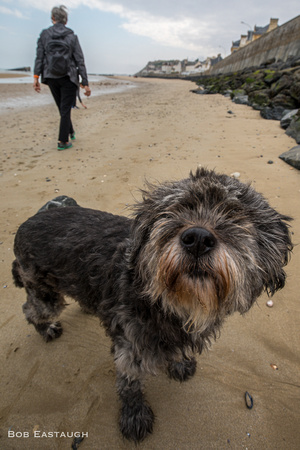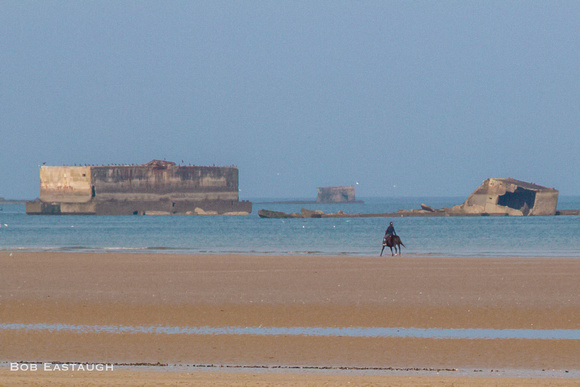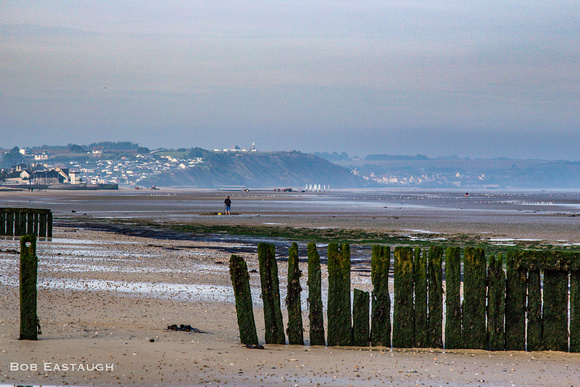Normandy; The Beaches, Part 4 (and Last), 2017
A few final thoughts about the Normandy invasion beaches. Visiting the beaches and war sites and museums is sobering; voices are muted, conversations discreet and somber. A sense of wonder prevails, at the sacrifice of those who died and at the perseverance and selflessness of all the combatants.
But the real wonder is that Normandy exemplifies both the best and the worst of mankind.
The worst was personally embodied by Hitler. He was wrong, logically and morally, on so many levels. He personally caused an avoidable war, and multiplied the evil with the Holocaust. But he didn't act alone. He happened to arrive at the moment Germany was most vulnerable. Through nationalism and also by unleashing in a significant part of the populace dark emotions, he brought enough people together to make him dictator. There was nothing in Germany, a highly civilized and well-educated nation, markedly different from the other industrialized, civilized countries. Although Germany had been forced after World War I to accept impossible terms, and its economy was in tatters, that doesn't explain how hatred displaced rational thought. It is not novel to conclude that the veneer of civilization is thin and flimsy. What happened in Germany in the early 1930s could happen anywhere (and at any time) if the circumstances are right. Outrageous incremental steps taken one at a time finally led to complete inhumanity. Hitler's personal embodiment of evil ultimately turned loose the darkest and worst forces of humanity. The worst was not Hitler; it was the the inhumanity he fostered. We can't smugly assume that the war and Germany's turn to evil and violence were an aberration attributable only to Hitler. If it could happen there, it could happen anywhere. All it takes is a demagogue and a receptive audience.
The best is on display in Normandy at two levels: At the macro level, the free nations (or their displaced leaders) cooperated in a massive operation designed to free a continent of conquerors and the world of a great nation in the thralls of great evil. At the micro level, combat in murderous conditions reflects an innate selflessness that somehow causes individual humans to act with unimaginable courage for the good of others. Those others are most prominently the immediate comrades at the squad, platoon, and company level. The courage and perseverance that led to the taking of Omaha Beach under lethal fire that visibly killed or wounded a majority of the first landing parties, to parachuting and landing in gliders at night on enemy soil, to continuing to drive the dual-drive (swimming) tanks into deep water after seeing almost all the previous tanks sink, are astonishing to peacetime visitors. And, by the way, the Allied soldiers had no monopoly on courage or the moral high ground in combat. The defenders were just as selfless and self-sacrificing. At the micro level, the inherent good or evil of their nations is irrelevant to the bravery and selflessness of men in small-unit combat.


Gold Beach panorama


The Normandy sky over the Mulberry relics is vast.


The relics seem to be outsize remnants of a forgotten civilization, as if Etruscans had worked with steel instead of bronze.


A school teacher takes her class onto Gold Beach at low tide.


Now tractors, not tanks, drive across the sand. They drag boat trailers, not artillery pieces.


The beach allows solitude.




Tractors haul shell-fish pots to Asnelles.




Dogs and dog-walkers now safely traverse the beaches (above, Arromanches; below, Utah Beach; and below that, Omaha Beach).




A distant rider crossed to the water's edge.




Above: Cropped detail
A nice day for a ride on firm sand; it was also firm enough for tanks and trucks.




Gold Beach, looking back at Asnelles and Arromanches


Cottages


Peacetime relics: remains of fisheries




One of several men harvesting what seem to be worms


Posing with an abandoned shell-fish enclosure
A child's boot contrasts with part of a defensive fortification.




Bright yellow, green, and - most fittingly - golden kelp lies everywhere along Gold Beach at the high-tide line.
But the kelp clumps offer a disconcerting mimicry of grim photographs of soldiers who died on the beach on D-Day.




Next, the American Cemetery and Memorial, Colleville-sur-Mer
Comments
Thanks for sharing.
